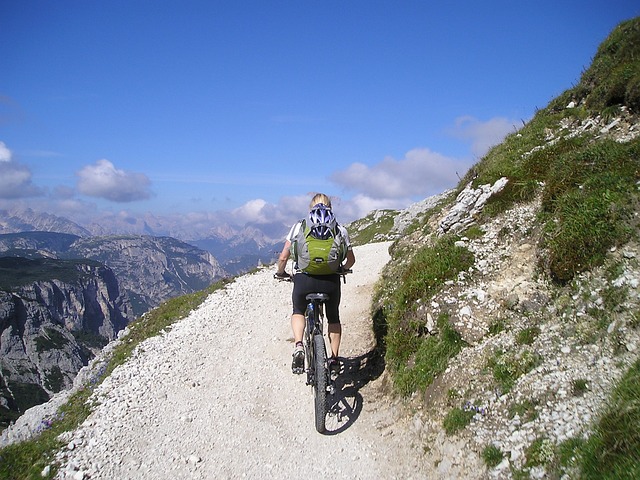
Mountain biking is an extreme sport. The level that you take it to depends entirely on your comfort and experience, but just being on two wheels on a trail is quite extreme in and of itself. While some people prefer to stay on those wide, packed-dirt trails for the entirety of their mountain biking tenure, other start out there and then take it up a notch when they are ready— and inspired.
Like all extreme sports, mountain biking has specific safety guidelines to help you focus on the fun and avoid the falling. No matter your level, the terrain or how long you’ve been riding, prioritizing safety is key to enjoying the ride. Here are 5 safety tips all mountain bikers should be sure to follow.
Always Wear a Helmet
No matter the trail or distance, always, ALWAYS wear a biking helmet. Even if you know the trail so well you could ride it in your sleep, wear a helmet. Even if you are only going a half a mile, wear a helmet. Make sure your helmet fits correctly and that you have it strapped securely under your chin. And keep it up-to-date. They can expire as the materials break down overtime. It’s a good idea to get a new one every few years at least.
Keep Your Bike Tuned Up
Performing regular upkeep and maintenance on your bike will make it less likely you’ll break down on a trail. Mechanical problems will pop up from time to time; it’s inevitable in a sport as rugged as mountain biking. Whether you perform tune-ups at home or take your bike to the local dealer, focus on maintenance that prevents damage to your shocks, brakes, pedals, seat, rims and frame.
Know Your Limits
There’s an old saying: know your edge, walk along it, but don’t jump off. Mountain biking is thrilling and it is easy to get caught up in the momentum of a good ride. That’s why one of the most crucial safety tips is to be aware of your limits. Before trying something new, take stock of your surroundings. Is there someone nearby to help in case something goes wrong? Have you done something similar and can learn from the outcomes? Are the folks on your group ride doing something you aren’t comfortable doing? Be smart when you ride so you can ride again.
Explore New Trails On Foot
If you’re tackling a new trail— especially if it is downhill or rugged terrain— take a hike first. And also take a notebook. Write down any technical areas with a mile marker. Plan how you will navigate those areas. Think about how far you want to go— is the trail a loop or an out-and-back? Even the same trail looks and feels different when going the opposite direction, so be sure to be just as mindful on the way back.
Prepare For Accidents
There isn’t a single mountain biker out there without a tale of an epic fall, tumble, bump or bounce. It’s going to happen. Your focus on safety will hopefully minimize any damage to your bike and injury to your body (and ego). It’s important that you take a small, simple first aid kit with you so you can patch yourself up well enough to get back to your car. Also, have good health insurance. You might as well pay a little extra for emergency department coverage in case you suffer an injury that requires stitches or results in a broken bone.
Let’s be honest— the risk of danger is part of the fun of mountain biking. That’s why the best safety strategy is the right mindset. Balance the thrill of the ride with safety precautions to make sure you get to stay in the saddle as often as you can.